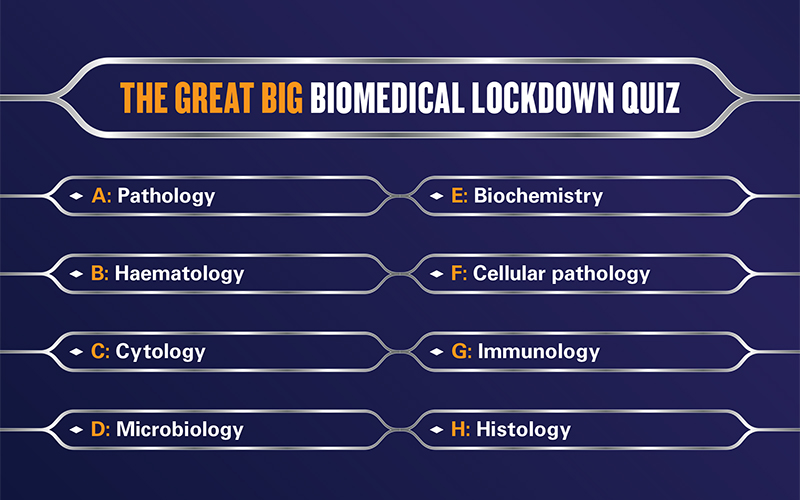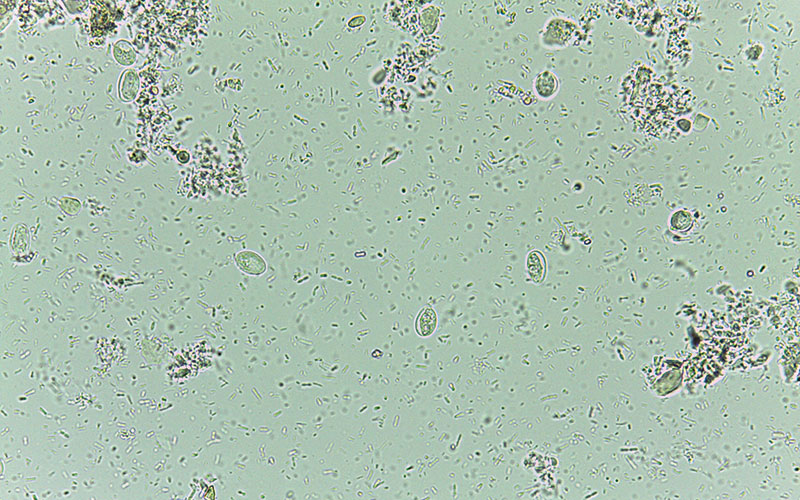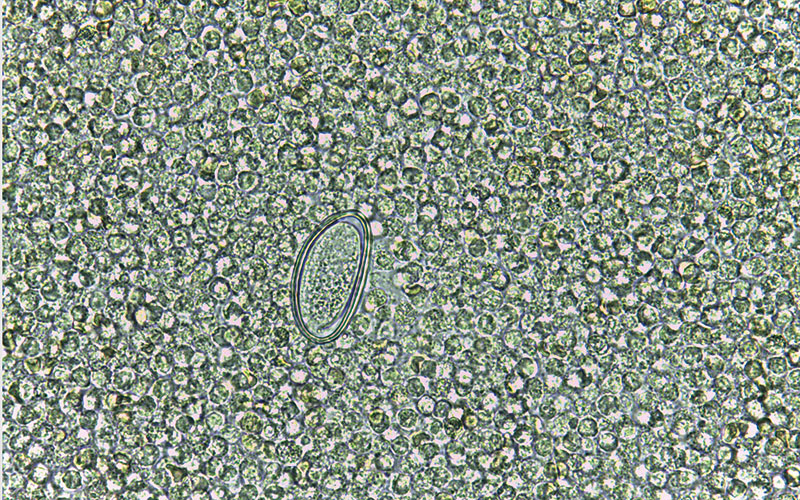Seven biomedical science experts ask questions to test IBMS members’ knowledge across the disciplines. (Scroll to the bottom of the quiz and click "download answers PDF" to see the answers).

In these times of social distancing, with families and friends coming together over Zoom meetings and WhatsApp chats, quizzes have struck a nationwide chord. From virtual pub get-togethers with colleagues, to families uniting in arguments about whether the Democratic Republic of the Congo flag has a vertical or horizontal stripe (note: it is actually diagonal), the quiz has become ubiquitous during the pandemic.
With this in mind, we decided to create a biomedical science quiz, compiled by seven experts in seven disciplines. There were no guidelines to what they could ask – they could make it as easy or as tricky as they wanted – as long as they stuck to their specialist discipline.
There are also no rules as to how the quiz is completed – you can do it in teams over a virtual chat, or just on your own in a brief break at work. As well as being a (hopefully) enjoyable activity, this quiz can also be used for CPD.
ROUND ONE: HISTOLOGY
Quizmaster: Dr Jo Horne – Consultant Healthcare Scientist, Southampton
- Which vitamin is synthesised in the epidermis of the skin?
- In 1920, the American pathologists Aldred Scott Warthin and Allen Chronister Starry introduced a stain that can identify Helicobacter pylori. Which phylum does this organism belong to?
- What type of illumination is used in light microscopy?
- Which chemical, found in Bouin’s fixative, is explosive when dry?
- What type of structures, specifically found in the duodenum, help to distinguish it histologically from the other parts of the small bowel?
- “Steart’s modification” can be applied to which neuropathological staining technique, and what does it stain? For a bonus point, in which English city did the biomedical scientist who developed it work?
- When assessing biopsies for Hirschsprung’s disease, what are you looking for an absence of?
- According to Royal College of Pathologists guidelines, which two immunohistochemical markers may assist in the diagnosis of vulval intraepithelial neoplasia (VIN)?
ROUND TWO: BIOCHEMISTRY
Quizmaster: Sheri Scott – Senior Lecturer in Biomedical Science, Nottingham Trent University
- What does AST stand for?
- With regards to analytical data, what does CV stand for?
- Which organ produces lipase?
- pH ↓ PCO2↓ HCO3−↓ represents which acid/base condition?
- Which sample type is used for the investigation of xanthochromia?
- What is the full name of the tumour marker used to aid the diagnosis of choriocarcinoma?
- What analytes are most commonly affected by EDTA contamination?
- What anion is abnormally secreted by cystic fibrosis patients?
- What name is given to occurrence of antibody/antigen saturation that can give falsely low results?
- What does ISE stand for?
ROUND THREE: HAEMATOLOGY
Quizmaster: Nicki Lawrence – Principal Biomedical Scientist and Advanced Practitioner in Morphology, University Hospitals of North Midlands
- Which haematologist conducted research on macrocytic anaemia of pregnancy and earned herself a Google Doodle in 2019?
- It has been suggested that which somatic mutation should be recognised as defining a distinct subtype of MDS?
- Christmas disease (haemophilia B) is named after Stephen Christmas, the first person described to have this condition, but what did he die of?
- Not all blood is red; what marine species has blue blood and why?
- Why are red cells a biconcave shape?
- How many new red cells are produced per second?
- Leishman, Giemsa and May–Grϋnwald are examples of what type of stain?
- In the international prognostic index for CLL, which factors confer a worse prognosis?
ROUND FOUR: CELLULAR PATHOLOGY
Quizmaster: Dr Guy Orchard – Consultant Grade Biomedical Scientist, St John’s Dermatopathology
- What is the name of the tree that haematein is extracted from to make haematoxylin, and where was it first discovered?
- What is the name of the organelles that synthesise melanin within our skin cells? How many stages of development do these organelles have?
- Who was it that discovered the first coronavirus and where was this?
- What are the cluster of differentiation (CD) numbers associated with the phenotypic profile of T helper and T cytotoxic lymphocytes?
- Where does the name Mohs come from in the cellular pathology sub-discipline of Mohs micrographic surgery?
- CAM5.2 is an antibody that recognises what, exactly? And how did it get its name?
- What are Purkinje cells and what is the best tinctorial silver staining method for their demonstration?
- How many Royal College of Pathologists- and IBMS-approved specimen type dissection categoriesare there, and what are they?
ROUND FIVE: CYTOLOGY
Quizmaster: Hedley Glencross – Lead Biomedical Scientist, Diagnostic Cytology and Andrology, Queen Alexandra Hospital, Portsmouth
- When viewed under crossed polarised light and using a first order red compensating filter (lambda plate), monosodium urate crystals demonstrate which type of birefringence?
- What do the letters EA stand for as used in Papanicolaou staining methods?
- Respiratory tract samples from individuals suffering from asthma sometimes contain intensely eosinophilic needle-shaped crystalline structures. What are these structures called?
- What are the well-defined holes present in the nuclei of cells in papillary carcinoma of the thyroid called?
- What is the principal feature seen in dyskaryotic cells in a slide made from a cervical sample?
- Which of the following are features of small cell anaplastic carcinoma of lung?
a. Moulding
b. Hypochromasia
c. 3-D clusters
d. Salt and pepper chromatin
e. Keratinisation - What is the recently published reporting system for salivary gland reporting called?
- Which of the following may lead to a potentially false-positive report in cervical cytology?
a. Histiocytes
b. Lymphocytes
c. Directly sampled endometrial cells
d. Polymorphs
e. Immature squamous metaplasia
ROUND SIX: IMMUNOLOGY
Quizmaster: Matthew Smith – Lead Scientist, Immunology, North West Anglia NHS Foundation Trust
- If you were presented with a normal serum C4 but low C3 and clinical details of haematuria, what autoantibody test might you consider undertaking?
- What disease is daratumumab used in the treatment of and what is the drug’s target?
- Vaccinations initiate an immune response. After inoculation, at what day does the IgG response typically peak?
- Which gene is mutated in the most common form of severe combined immunodeficiency?
- Name the disease state mitochondrial antibodies are typically associated with?
- Which autoantibody is associated with Devic’s disease?
- Which wheat protein is most associated with exercise-induced anaphylaxis?
- Which classification of allergic reaction would result in an IgE-mediated response?
ROUND SEVEN: MICROBIOLOGY
Quizmaster: Daniel Weiand – Consultant Microbiologist and Educational Lead, Freeman Hospital, Newcastle
- A seven-year-old girl from Sudan had a stool examination on returning to the UK. A formalin-ethyl acetate (FEA) concentration was performed; what is your diagnosis on the basis of microscopy of wet mount preparation? (Fig 01) Figure 01

- A 59-year-old woman presented to A&E with a swollen and erythematous left thumb, having been bitten by a dog several days earlier. Culture of pus expressed from the wound led to poor growth on CLED agar, but good growth on both chocolate agar and blood agar, at 24 hours’ incubation. What is the most likely pathogen?
- A four-year-old boy is taken to the GP for investigation of perianal itch. What is your diagnosis on the basis of microscopy of perianal swab and sellotape slide? (Fig 02)Figure 02

- A 59-year-old man presented with cough, having last visited Vietnam to visit his family five years ago. On the basis of microscopy of a fresh faecal specimen, the diagnosis of strongyloidiasis was made. What is the lifecycle of this pathogen?
- What class of microbiological safety cabinet provides the minimum standard required to work with Mycobacterium tuberculosis isolates?
- Bacterial pneumonia, recurrent herpes zoster infection, and oral candidiasis are commonly occurring clinical indicator conditions for which infection?
- Staphylococcus argenteus was first reported in 2015, alongside Staphylococcus schweitzeri. Multi-locus sequence typing (MLST) and a single genome sequence demonstrated significant divergence from which other species of Staphylococcus?
- A serum procalcitonin level of less than 0.25ng/ml should prompt careful review of which class of medication?
